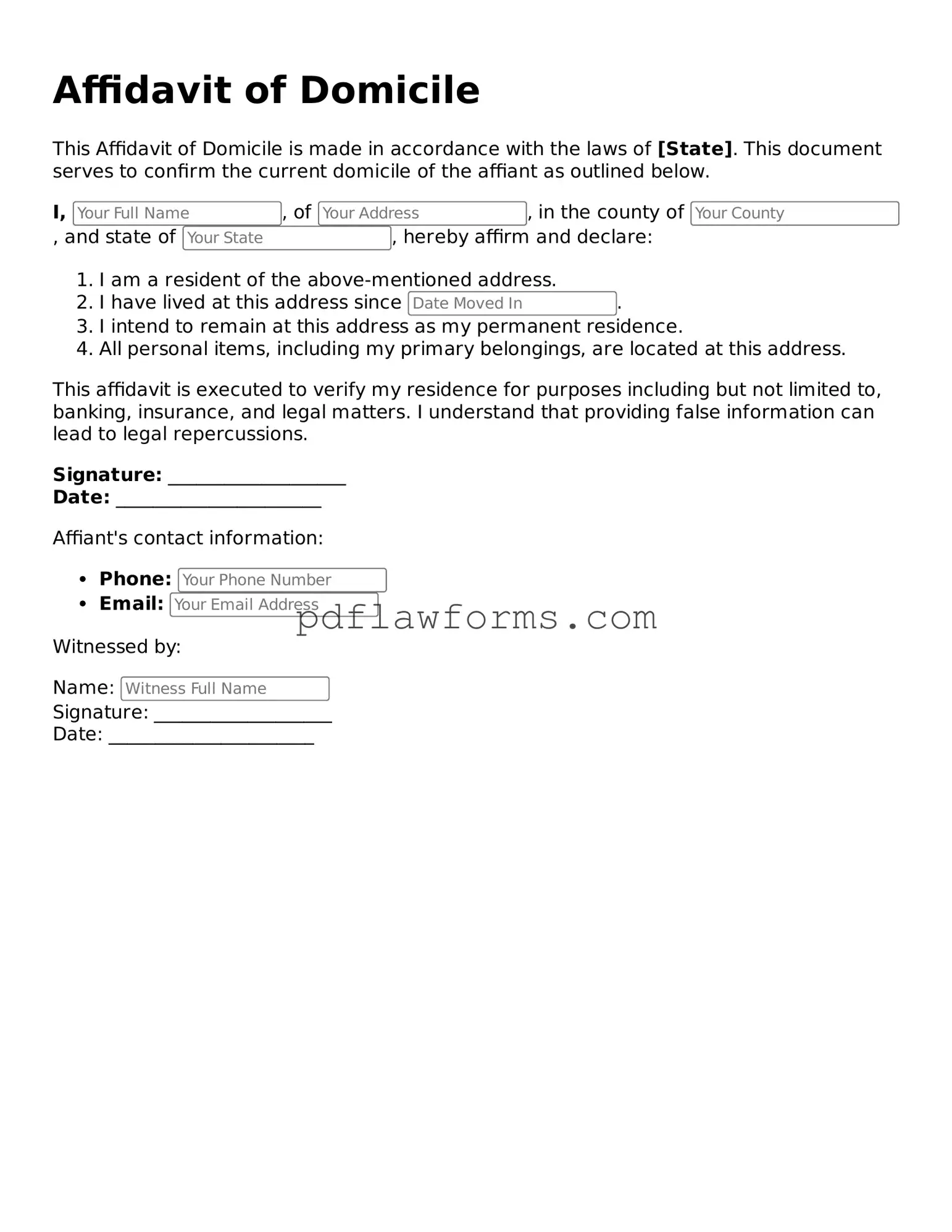Official Affidavit of Domicile Form
The Affidavit of Domicile is a legal document that verifies an individual's primary residence, often used in estate planning and probate matters. This form helps clarify where a person resides for legal purposes, ensuring that assets are distributed according to their wishes. If you need to complete this form, click the button below to get started.
Make My Document Online
